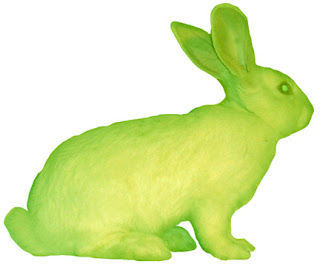In Evelyn Fox Keller's article entitled "The Biological Gaze," she discusses the ways in which the gaze or the act of looking at something can transform into actual touching. A form of literal material transgression. She claims that looking with the naked eye is not as innocent as it may seem, for it is also an intrusive act. Keller gives examples of early science breakthroughs such as the microscope and x-ray to examine how these technologies have changed the meaning of "seeing."

In the early days of the microscope, people often did not have much interaction with the object being examined under the lens. It was a relatively passive event and people were unable to touch the microscopic reality, questioning if they were even seeing anything at all. It wasn't until the study of embryology that scientists were able to intervene with the microscopic image, injecting organisms with micropipettes armed with cells from another orgamism, which led to the production of transgenic organisms. The term "armed with a microscope" seemed to take on whole new meaning.

Amy Ross's paintings pose the question: what would happen if the DNA sequence of a plant or mushroom were spliced with that of an animal? She uses this idea of transgenic organisms to morph animals with branches, mushrooms, berries, and blossoms, thus creating implausible hybrid creatures. She approaches the study of the natural world through the lens of genetic engineering and mutation gone awry.
The eye is not a purely passive instrument for the study of pristine nature. There is an interdependence between the eye and the hand, and for Keller, technology is where the two merge, causing the acts of looking and touching to become undifferentiated and unified. This concept of a biological gaze seems an interesting twist from the original feminist concept of "the male gaze," and the use of technology is what mainly separates the two ideas. For Keller, science is an area of study that is often all about observing and gazing, similar to art, but in science the gaze can go much farther, inducing change and growth where there might not otherwise be.

Surrealist painter Remedios Varo blurs the lines between the human and the inhuman and the natural and the technological. In this painting entitled "Creation of Birds," an owl/human hybrid is sitting at a desk creating birds using the moonlight and a magnifying glass. Varo is showing her audience that artificial creation is something that can be mysterious and natural as well as scientific.
In George Gessert's article entitled "Art is Nature," he argues that most art today, from an ecological point of view, is approximately 140 years out-of-date. Most contemporary artwork focuses on the human figure, artifacts, or technology, showing nature as distinct from humankind and art; a pre-Darwinian faith that humans are at the center of the universe. He lists many artists who have overcome this roadblock, in particular Eduardo Kac, whose genetically engineered rabbit has become a transgenic art piece surpassing that of any two-dimensional picture. Kac has used genetic engineering to transfer synthetic genes to a living creature, thus creating a green florescent bunny.

This "art piece" bridges science and creativity to produce a whole new idea of transgenic art. Although this unnaturally glowing bunny automatically spurs a dialogue involving the ethical implications of genetic engineering, it also examines the ideas of normalcy, purity and hybridity. Is this rabbit natural? Probably no more natural than a hybrid fruit- e.g. plumcots, grapples, etc.
No comments:
Post a Comment